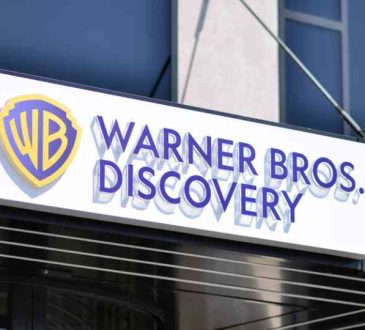Gauging the Success of a Super Bowl Ad with Social Analytics

Each year brands pump millions of dollars into their Super Bowl ads to build emotional connections with consumers. Following the big game come the critics declaring which ad “won” or “lost.” But the press often only relies on metrics like YouTube views, brand mentions and sentiment when declaring the brand winners and losers.
This year, Networked Insights decided to dig deeper, analyzing nearly 50 different consumer emotions on social media, to find out the true impact of a Super Bowl advertisement. We found baseline statistics by analyzing posts in each emotional category over 14-days prior to the big game. This helped us compare how many posts expressed emotions of, for example, “love” for a brand on a typical day versus how many posts were associated with that emotion during the Super Bowl. We then looked at the 14-days after the big game to see if conversation and emotions sustained beyond the Super Bowl.
Additionally, we used social data to quantify brand health scores. Brand health scores contain three elements: customer satisfaction, customer loyalty and brand advocacy.
Here’s a snapshot of our Super Bowl findings from three brands with interesting results:
Loctite:
The glue manufacturer Loctite is not a major advertising player, yet it bet big and won big during the Super Bowl. Loctite’s quirky Super Bowl ad generated nearly 11,000 consumer discussions, a huge increase from their average of a few hundred daily mentions. Additionally, around 35,000 of those conversations expressed some sort of positive emotion (amusement, excitement/joy, love/like/happiness, trust). Typically, the brand sees anywhere from 10-15 posts with an associated positive emotion. But how did the Loctite brand succeed beyond the Super Bowl? Loctite brand mentions averaged 52 positive conversations per day in the 14 days following the big game and have maintained an average above their pre-Super Bowl levels ever since.
In terms of brand health (customer satisfaction, customer loyalty, brand advocacy), Loctite grew its score by 100 percent, with customer satisfaction conversation growing 677 percent.
Nationwide Insurance:
On an average day, Nationwide enjoys an average 1,000 brand mentions, 100 of those specifically positive. And this year, Nationwide’s two TV spots had an interesting impact on the brand. Consumers reacted well to Nationwide’s first Mindy Kaling advertisement, with nearly 4,000 positive social media posts. However, negative reaction exploded after Nationwide ran its somber, “Make Safe Happen,” advertisement. Nationwide’s average positive posts per day increased from 98 to 137 after the Super Bowl, so the positive emotional connection is good. However, their negative mentions also increased from 11 to 70 per day. So, what does this mean for Nationwide?
Nationwide’s polarizing campaigns may have sparked a lot of negative and positive conversations, but the brand managed to grow two of its brand health scores – customer satisfaction (270 percent), and customer loyalty (226 percent), with many consumers sharing their positive experiences with Nationwide as a company. However, Nationwide’s brand advocacy dropped 38 percent.
McDonald’s:
McDonald’s is a marketing powerhouse, receiving an average of 2,500 positive posts per day. After debuting their “Pay with Lovin’” TV ad and correlating Twitter campaign, the brand enjoyed an increase in more than 37,500 positive posts. Post-Super-Bowl, however, McDonald’s averaged 2,750 positive posts per day. This is a sustained improvement, but only by 10 percent.
So what does this mean for McDonald’s? The brand saw the smallest percentage gains in brand health, but the marketing team should still take this as good news. Brand health is up by 34 percent, an impressive move for a big brand like McDonald’s. Additionally customer satisfaction and brand advocacy are up by 45 percent. Customer loyalty dipped five percent, but minor fluctuations like this are common for this metric.
So what does this data for all three brands mean for Super Bowl advertisers as a whole? What can brands takeaway? Clearly, social data can tell brands a thing or two about the success of a Super Bowl ad.
Here are two major lessons:
The Super Bowl can Foster Emotional Connections with Consumers
First, we see from our analysis that brands can make connections with consumers from a Super Bowl TV ad (and can maximize that connection with a strong digital campaign). While the window of consumer connection seems to be about two weeks based on social conversation, the broader connections can last beyond the game. Advertisers who integrate digital capabilities into their TV advertisements can increase emotional responses beyond the initial TV spot.
All Press Can be Good Press
Second, our analysis finds that the cliche, “all press is good press” correlates with Super Bowl investments and brand health. While Nationwide’s second TV spot generated backlash, the company enjoyed an increase in overall brand discussion.
When it comes to creating a successful ad, striking the right chord with an audience requires careful planning. By measuring consumers’ emotional responses to ads, brands can realistically gauge the success or failure of their campaign and understand what aspects of a campaign worked. These insights can not only help with real-time campaign adaptions, but also provide solutions and takeaways brands can apply to future messaging.
*******************
Rick Miller, VP of Customer Insights, Networked Insights. You can follow Rick on LinkedIn.
Add CEOWORLD magazine to your Google News feed.
Follow CEOWORLD magazine headlines on: Google News, LinkedIn, Twitter, and Facebook.
This report/news/ranking/statistics has been prepared only for general guidance on matters of interest and does not constitute professional advice. You should not act upon the information contained in this publication without obtaining specific professional advice. No representation or warranty (express or implied) is given as to the accuracy or completeness of the information contained in this publication, and, to the extent permitted by law, CEOWORLD magazine does not accept or assume any liability, responsibility or duty of care for any consequences of you or anyone else acting, or refraining to act, in reliance on the information contained in this publication or for any decision based on it.
Copyright 2024 The CEOWORLD magazine. All rights reserved. This material (and any extract from it) must not be copied, redistributed or placed on any website, without CEOWORLD magazine' prior written consent. For media queries, please contact: info@ceoworld.biz
SUBSCRIBE NEWSLETTER








